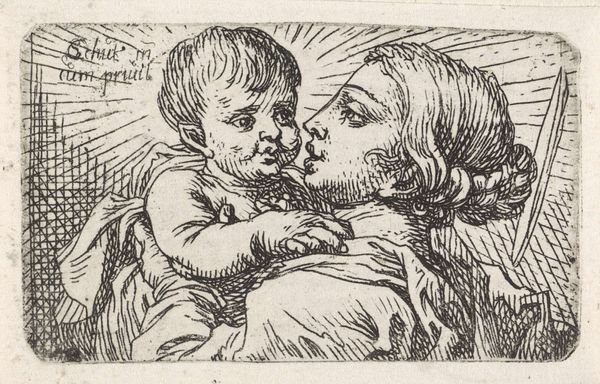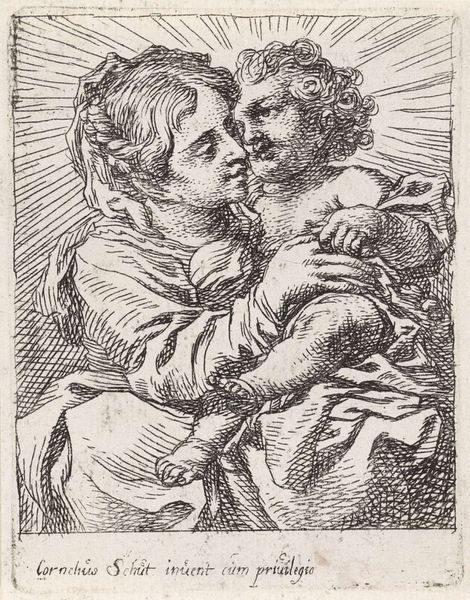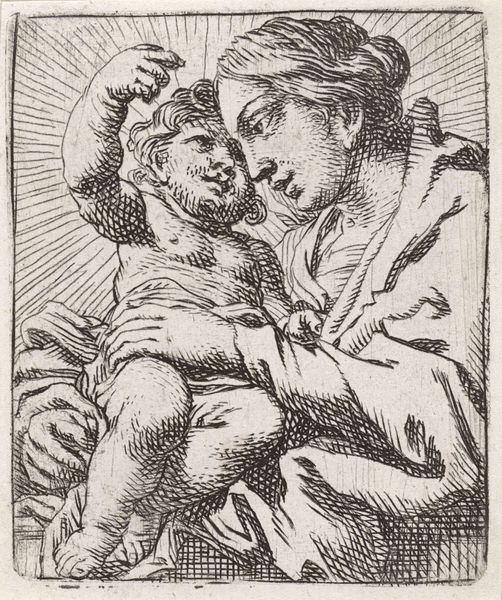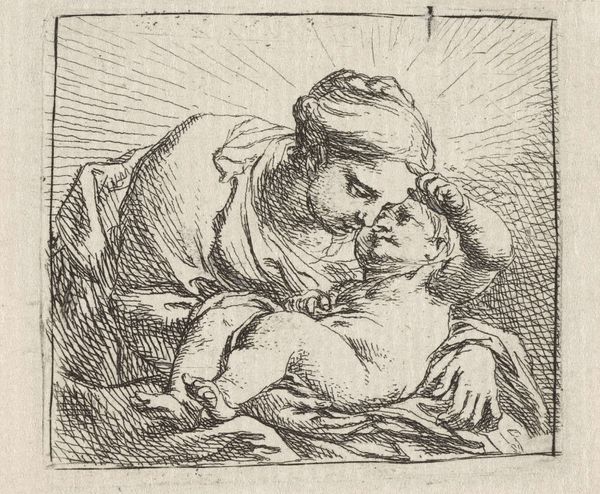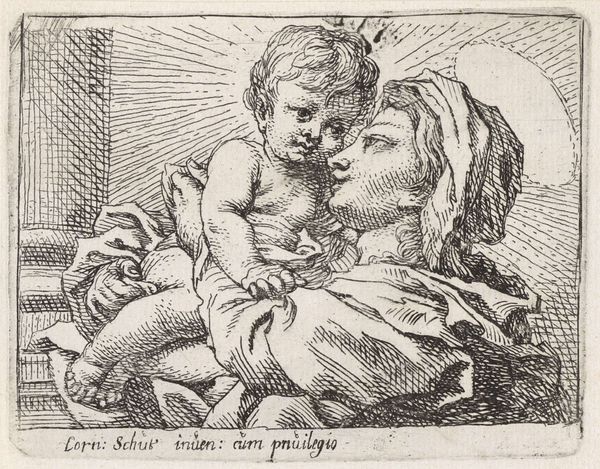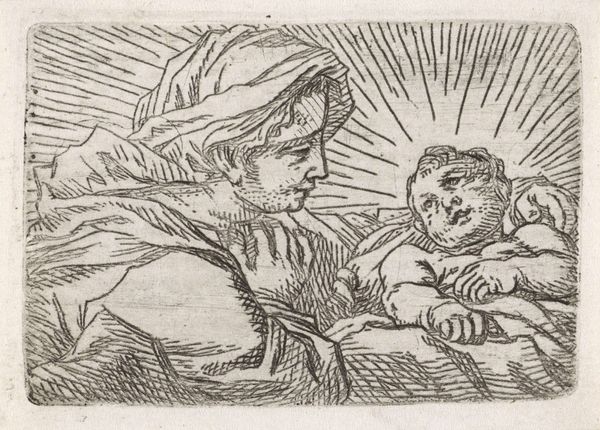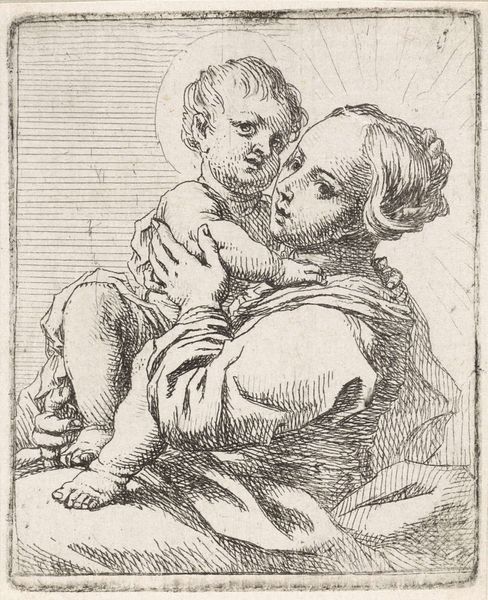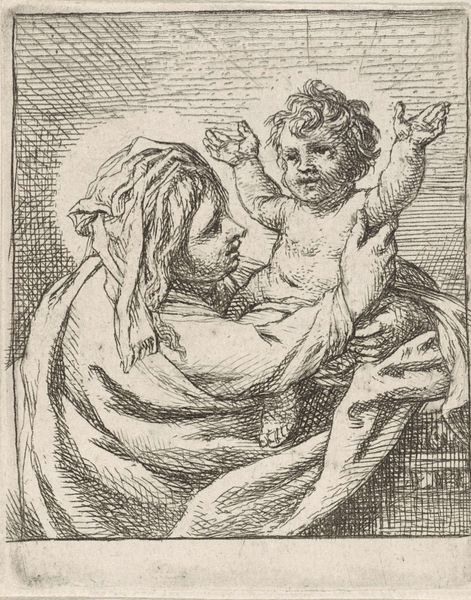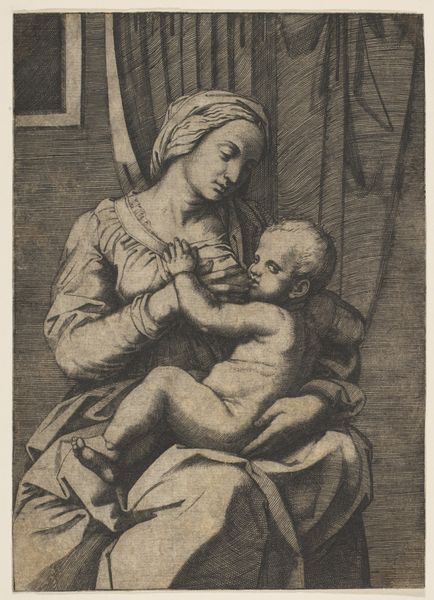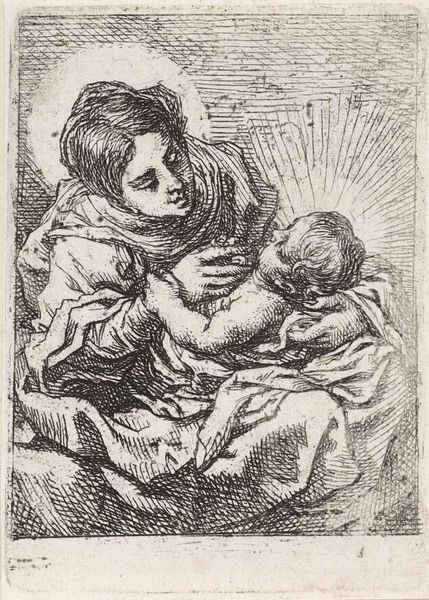
drawing, ink
#
portrait
#
drawing
#
baroque
#
pen drawing
#
ink
Dimensions: height 46 mm, width 75 mm
Copyright: Rijks Museum: Open Domain
Cornelis Schut created this image of the Madonna and Child sometime between 1610 and 1655 using etching. Look closely, and you can see the fine lines incised into the metal plate. The choice of etching is significant. Unlike engraving, which requires immense strength to cut lines directly into the metal, etching uses acid to do the work. The artist covers the plate with a waxy ground, draws through it to expose the metal, and then immerses the plate in acid. This process democratized printmaking to some extent, allowing for a more expressive and fluid line. Here, Schut uses the etching needle almost like a pen, creating a lively composition with economical strokes. Note the hatching used to model form and create areas of shadow. The image’s apparent spontaneity belies the careful labor involved in its making, a reminder that even the most seemingly effortless artworks are the product of skill, process, and intention. Considering these aspects allows us to appreciate the full depth of Schut’s achievement.
Comments
No comments
Be the first to comment and join the conversation on the ultimate creative platform.
